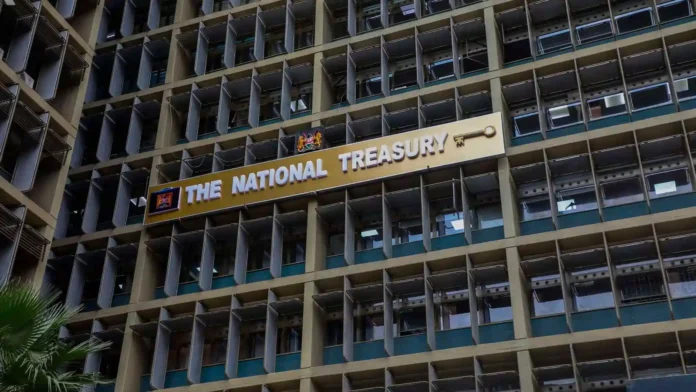Kenya Secures Ksh193 Billion Loan, Retires Ksh129 Billion Eurobond Early – 1 Major Economic Move
Kenya has raised USD 1.5 billion (approximately Ksh193.8 billion) from international markets and used part of those funds to retire USD 1.0 billion (about Ksh129.2 billion) of its 2028 Eurobond ahead of schedule. Business Daily+3Citizen Digital+3Kenyans+3
In a statement on October 3, Treasury Principal Secretary Chris Kiptoo described the maneuver as evidence of the government’s “firm commitment to managing debt more wisely, paying off loans on time, and protecting Kenyans from sudden repayment shocks.”
This marks Kenya’s third liability management operation since 2024, furthering a strategy to smooth the nation’s debt servicing profile and reduce concentrated maturity risk.
Structure and Terms of the New Loan
The fresh funds were raised via a dual-tranche issuance:
- 7-year tranche at 7.875% interest
- 12-year tranche at 8.8% interest
These combine into a blended rate of about 8.7%, which the government says is one percentage point lower than what comparable borrowing would have cost earlier in the year.
Investor appetite was robust: while Kenya sought USD 1.5 billion, total bids exceeded USD 7.5 billion (roughly Ksh969 billion) — five times the target amount.
The government says that by locking in this funding now, it has extended and smoothed debt repayment schedules, thereby granting itself more breathing room in managing fiscal pressures.
Early Redemption of the 2028 Eurobond
The Eurobond being retired early was originally issued as a USD 1.0 billion, 7.25% coupon note due February 28, 2028.
To encourage bondholders to sell, Kenya launched a tender offer from October 2 to October 9, with settlement set for October 14.
Offers accepted are being paid at a premium: US$1,037.50 per US$1,000 principal, along with accrued interest, equivalent to a buyback price of 103.75%.
By canceling or retiring these repurchased notes, Kenya reduces the bullet maturity burden in 2028 and alleviates refinancing risk.
Implications for Kenya’s Debt Profile
1. Reduced Refinancing Risk & Maturity Clustering
By retiring a large Eurobond early, Kenya lessens pressure on its future refinancing slots. Instead of facing a lump-sum payment in 2028, the debt is spread into later years.
2. Interest Cost Savings (Potentially)
Although Kenya offers a premium to buy back the bond, the new borrowing at lower effective rates helps lower the average cost of debt servicing over time. The 8.7% blended rate is viewed as favorable under current market conditions.
3. Enhanced Market Confidence
Overwhelming investor response — with bids five times the amount raised — signals strong external confidence in Kenya’s credit and financial discipline.
4. Fiscal & Budgetary Relief
The move eases short-term borrowing strain, allowing more resources to be allocated toward development priorities like health, infrastructure, education, and social services.
5. Risks & Trade-offs
- Kenya is still taking on new loan, so net debt levels don’t fall automatically.
- The premium paid and issuance costs for the new bond may offset part of the benefit.
- Market conditions could shift, increasing risk on the new issuance.
- Strong reliance on investor appetite means global interest rates and sentiment remain key.
Expert Reactions & Context
Economists generally view the operation as prudent loan management rather than a bailout — Kenya is not escaping debt, but reshuffling its maturity structure.
One analyst noted, “Kenya is borrowing to repay, but on better terms. This is a classic liability management play, not debt forgiveness.”
A cautionary observation: such strategies work best when interest rates are stable or falling; sudden rate hikes globally could make new borrowing more expensive than anticipated.
In the context of rising global interest rates and tight capital markets, Kenya’s success in tapping USD 1.5 billion with strong demand is notable. Previous attempts by frontier economies often face high premiums or weak demand.
What Comes Next
Kenya’s Treasury will now await final results of the tender and gauge how many investors tendered their bonds. If enough accept, the burden of the 2028 maturity will shrink.
Simultaneously, the government must manage the new bonds’ performance and ensure that the yield and coupon structure remain sustainable given revenue forecasts and budget constraints.
Further, Kenya’s loan-to-GDP ratio and debt servicing metrics will be closely monitored by rating agencies and investors. Prudent execution may help avoid credit downgrades or increased risk premiums.
Finally, the effectiveness of this move depends on the government maintaining fiscal discipline, revenue growth, and avoiding excessive new borrowing spree that erodes any gains.
In summary, Kenya’s securing of Ksh193.8 billion in new loans and the early retirement of its Ksh129 billion Eurobond is a clear signal of active debt management, market confidence, and fiscal strategy. The coming months will show whether this reshuffling truly restores flexibility or merely postpones future pressures.
Would you like a shorter version (for print or newsletter) or a version optimized for web (with linked sources, headings, and SEO)?
Recent Kenya Finance & Debt News



















